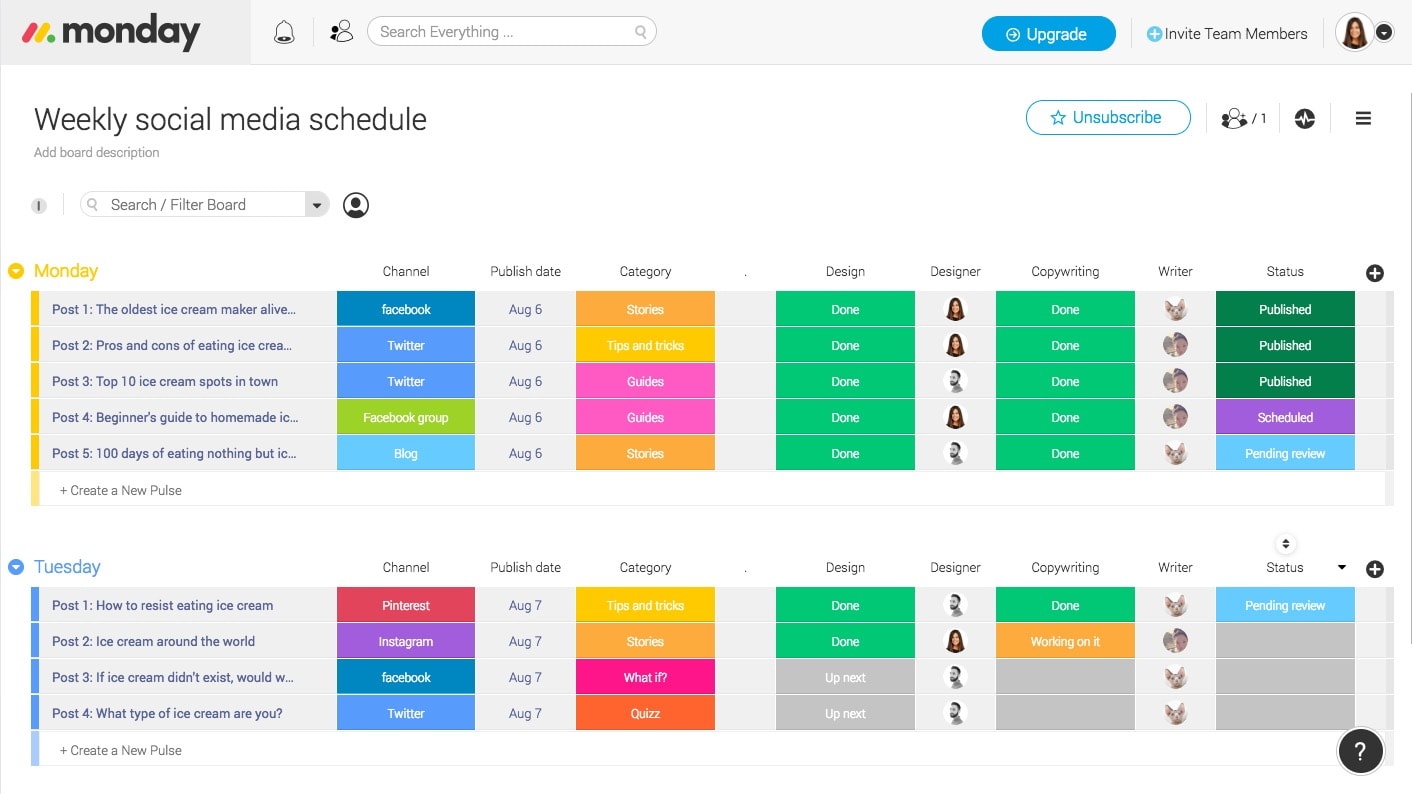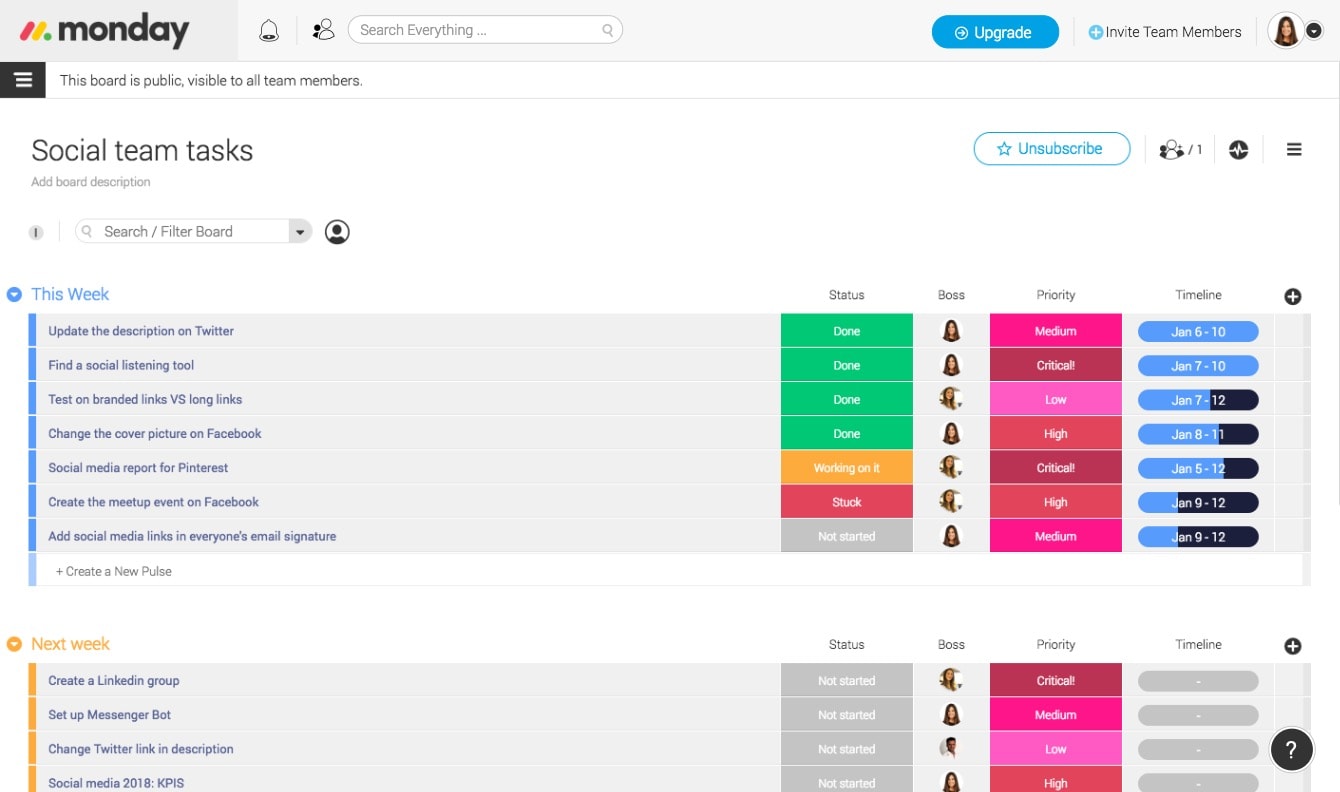If you’re responsible for managing a day-to-day social media plan, you know how hard it can be to juggle everything, from content plans and target audiences to driving traffic to your profile. Chances are at some point you’ve found yourself in this scenario:
You’ve built a social media content calendar you’re so proud of, it can’t fail. You’ve found the perfect publishing tool that already found the best times to post everything you have, from blog posts to Facebook and Twitter polls.
Yet no matter how organized you are, your day-to-day life is still so chaotic with creating content that your other processes are slipping. You’re missing an image for tomorrow’s social post. Your team doesn’t understand the tone of voice or visual unity you’re trying to maintain on Instagram.
You’re going back and forth with your client to get their approval on your editorial calendar. You need an edit on a graphic that was supposed to go live an hour ago. All issues that are hindering your bigger social media goals!
Sound familiar? The good news is there’s a solution. In this blog, we’ll take you back to basics for creating a social media plan and cover three big challenges we’ve encountered managing the social plan here at monday.com—and the templates we use to solve them.
What should be included in a social media plan?
Before you can even begin to address some of your most pressing challenges regarding your social media plan, take a step back. Have you built a solid social media plan to begin with? Doing a quick social media audit of your existing plan can save time in the future.
A well-constructed plan should include:
- A defined list of goals and objectives
- An audit of your social media presence
- A content strategy outline
- An established method for tracking metrics and analyzing performance
- A competitive analysis of similar accounts
- A basic outline of your social media content strategy outline
How can I make a social media plan from scratch?
We know you might have been in the social media game for a while, but sometimes a quick reset is in order, especially when you’ve been in the weeds for a while. As a refresh, compare your existing social media plan process to the following:
Step 1: Choose what social networks your plan is for. You don’t need to have a presence on all of them; determine which ones matter for you and your audience. i.e. if you’re a small business selling pool supplies, Pinterest might not be your ideal platform.
Step 2: Fill out all information completely on your profiles: bios, thumbnail pictures, contact info, etc.
Step 3: Find your accounts’ voice and tone
Step 4: Choose a posting strategy. This includes everything from frequency and type of content to targeted campaigns. Goal setting will guide this decision.
Step 5: Analyze and test your plan. Determine if you want to use additional analytics tools.
Step 6: Automate and engage. There are several tools out there to post for you, but you must also consider other factors that engage your followers, such as being active in the comments section.
monday.com’s Work OS is the perfect tool to bring all of this information into one place, so you can continually tweak and improve your social media plan.
What is a Work OS?
A work operating system (Work OS) is a cloud-based software platform that allows teams to plan, run, and track processes, projects, and everyday work. They can even build custom workflow apps.
The key quality of a Work OS is that it provides the flexibility to build and adapt to any workflow, project, or process. In the case of a social media planner, we couldn’t manage our own campaigns and goals without a Work OS!
We use it for everything, from collaborating across teams to tracking our performance and posting schedules. Whether you’re managing a team or a personal social media plan, and whether it’s all in-house or you’re working with external providers, like designers or clients- we’ve got this.
Check out these templates we’ve made to address some of the biggest challenges for your social media planning.
Challenge #1: Keeping designers synced with your schedule
After you’ve finished planning your social media schedule for the week or month, the next step is to connect with your team of designers and copywriters. Your goal is to create beautiful images, infographics, and content to distribute across your social channels.
The problem is, keeping everyone up-to-date and getting your assets ready to schedule in your favorite publishing tool (Coschedule, Hootsuite or Buffer) can quickly get out of hand. The asset you assigned isn’t ready. The designer doesn’t know what’s going live when. No one has access to nor understands how your scheduling tool works.
Moreover, a tool like Buffer or Coschedule doesn’t help your team sync on your editorial calendar. They’re perfect for scheduling and posting, but they lack the essential function of helping your team plan, collaborate, and execute together. Just like that, your perfect social media plan is collapsing.
The solution? Create a monthly schedule and share it with everyone.

Take a look above. In this template, we’ve outlined a weekly workflow that clearly defines the handshakes between different departments or stakeholders. It syncs everyone on where things stand and helps you plan a consistent weekly content schedule. See the number of posts, the titles, the publishing date, and the category. Your day-to-day job of social media planning just became way less painful in your social media calendar.
Challenge #2: Your social team doesn’t know what to do next
Social media marketing isn’t only about publishing content on social platforms. Your daily tasks also include responding and engaging to comments, testing links on social networks, updating social media reports, social listening, answering Quora questions, and much more!
The challenge here is to manage your team’s workload and get everyone synced on who’s doing what. If you work with teams across multiple offices, cities, or countries, the potential for confusion is tenfold.
The solution? Create a weekly task list for everyone on your team.
Whether you are working in the same room as your teammates or across oceans, a weekly task list is the best way to get your team organized and synced. List out all your to-dos and assign ownership.

Challenge #3: Email with your clients has gotten out of control
When you’re working as a social media manager for one or several external clients, you can quickly find yourself in an endless back and forth of email exchanges. You need to get their approval, share your progress, update them on reports, and more. Again, the tool you’re using for your social media plan doesn’t include client management or a marketing work management software.
The solution? You need a centralized place to work with your clients!
You need more than a visual display of your tasks or a content calendar. You also need a place to communicate and share visuals. The communication feed in monday.com is a place to share visuals, upload documents, provide links, and start conversations. Everything is saved and easy to find when you need it. Clients will always know where everything stands so they don’t need to email or call you.
Social media marketers are organized. They just lack the one tool they need to centralize and connect everyone on their team. Rather than using Buffer, Google Spreadsheets, Dropbox, iMessage, and email, you can now say goodbye to chaos. You only need two tools: an awesome scheduling tool like Buffer, and an awesome execution tool like monday.com.


